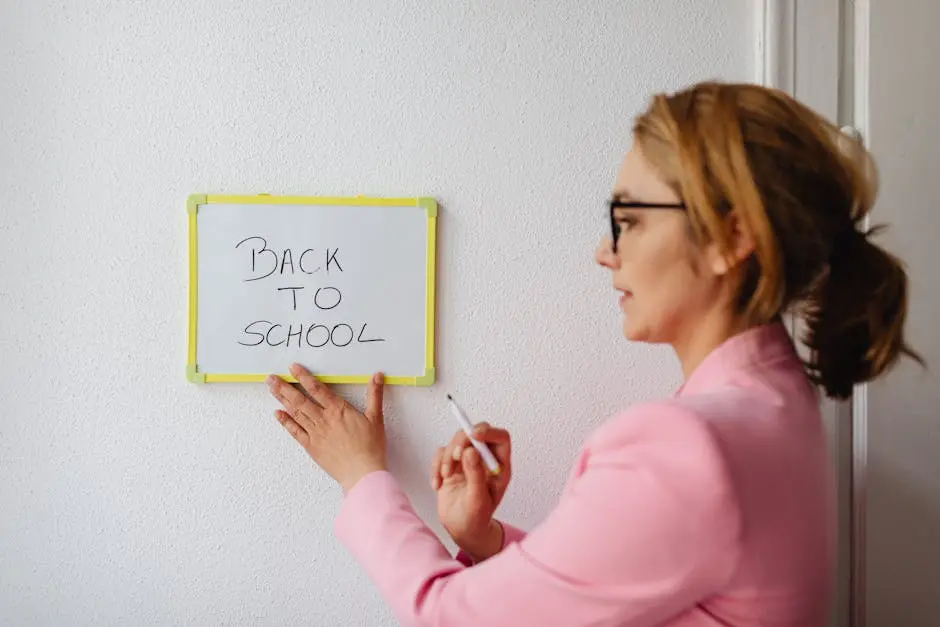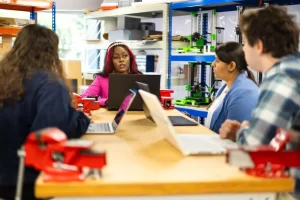Effective lesson planning is key to creating an engaging and meaningful classroom experience. In this blog, we’ll explore practical tips that make lesson planning not only easier but also more effective for teachers of all levels. Let’s dive into some strategies that will help you streamline your planning process and enhance your teaching.
Understanding the Importance of Lesson Planning
Lesson planning is the key to effective teaching. It helps teachers to plan their lessons, set objectives, and address different needs of their students. Let us learn about the significance of lesson planning for teachers and students.
If teachers take the time to plan their lessons thoroughly, they create a learning setting that is not only structured but also tailored to engender student involvement. Planning is a deliberate process of considering the unique strengths and abilities of each student. Well-planned lessons can also lead to smoother movement through the curriculum with fewer disruptions and more time spent on learning.
Furthermore, lesson planning enables teachers to reflect on practice and become professional. It offers a moment to critically ask: What did well in the last lesson? How can I adapt to better meet my next class? The reflective process is key to development and helps make teachers responsive to students in a positive manner.
Setting Clear Learning Objectives
Starting with clear learning objectives is essential. By defining what you want your students to achieve by the end of a lesson, you create a focused roadmap for your instruction. Here’s how to articulate effective objectives.
Clear objectives not only guide your teaching but also help students know what is expected of them. Using the SMART criteria—Specific, Measurable, Achievable, Relevant, Time-bound—can enhance the effectiveness of your goals. For instance, instead of saying, ‘Students will understand the water cycle,’ a more defined objective would be, ‘Students will be able to diagram the water cycle and explain the process of evaporation within a 30-minute class period.’ This level of specificity sets your students up for success.
Moreover, sharing these objectives with your students can foster a sense of ownership over their learning journey. When they understand the ‘why’ behind their lessons, they are more likely to engage wholeheartedly. Objectives act as milestones that both teachers and students can look back on when assessing progress over a unit.
Incorporating Varied Teaching Strategies
To cater to different learning styles, incorporating a variety of teaching strategies is vital. From group discussions to hands-on activities, we’ll explore various methods to make your lessons more dynamic.
Variety in teaching strategies not only keeps students engaged but also meets them where they are in their individual learning processes. Some students thrive in group settings, where they can share ideas and collaborate, while others may succeed with a more solitary approach, allowing them to process concepts at their own pace. Blending these strategies can create a rich learning environment that addresses the entire spectrum of student needs.
Furthermore, integrating technology can enhance these varied strategies. For example, using educational software or apps during lessons can turn traditional assignments into interactive experiences. This not only motivates students but makes learning more enjoyable—an essential element for long-term retention of knowledge. Let’s not forget about the power of gamification; turning lessons into games can transform the classroom atmosphere, making learning both fun and effective.
Utilizing Technology for Lesson Planning
Technology can be a powerful ally in lesson planning. We’ll look at some useful tools and resources that can help you create interactive and engaging lesson plans with ease.
With an abundance of platforms available today, teachers can leverage technology to simplify their planning. For instance, digital lesson planning tools like Planbook or Google Classroom allow for streamlined organization of lessons, materials, and resources. You can easily share these plans with colleagues, ensuring everyone is on the same page. Additionally, incorporating multimedia resources—videos, podcasts, and virtual simulations—can enhance lesson engagement and cater to diverse learning preferences.
Moreover, accessing online communities for educators can be invaluable. Websites like Teachers Pay Teachers or Pinterest offer a treasure trove of ready-made resources and lesson ideas that can save time and inspire creativity. Educators can also check out the LYS Lesson Planning App, which has a library of varied TEKS-aligned lesson plans that can lessen planning time by up to 50%!
Networking with other educators through these platforms also opens doors to sharing experiences and best practices, ultimately enriching your own teaching toolkit.
Creating a Flexible Lesson Plan
Flexibility is key to effective teaching. We’ll discuss how to design lesson plans that allow for adjustments based on student engagement and understanding.
A rigid lesson plan can sometimes hinder the learning process. The ability to pivot when things aren’t going as expected can make a significant difference. For instance, if a group discussion reveals more questions than answers, allowing extra time for exploration can lead to deeper understanding. This adaptability showcases your responsiveness to student needs, an essential component of effective teaching.
Creating a flexible lesson plan doesn’t mean tossing out your objectives; rather, it involves building in opportunities for review or extension activities. By knowing which concepts might require additional attention, you can seamlessly weave in these adjustments without losing sight of your overall goals. Through thoughtful planning and a readiness to adapt, you can create a classroom dynamic that is both productive and responsive.
Reflecting on Your Lesson Plans
Taking time to reflect on your lesson planning process can lead to continuous improvement. We’ll cover how to analyze what’s working and what needs adjustment for future lessons.
Reflection is not just a post-lesson activity; it’s an integral part of the planning process. By regularly assessing the effectiveness of your lessons, you can identify patterns that inform your future planning. Consider keeping a teaching journal where you note down observations, successes, and areas for improvement after each lesson. This practice not only aids in recognizing what works best for your teaching style but also helps in adjusting to the needs of different classes.
Moreover, discussing your reflections with peers can add a new dimension. Collaborative reflection with colleagues can spark fresh ideas and strategies that you may not have considered. Engaging in professional learning communities, whether online or in-person, can uplift your teaching practice and provide much-needed encouragement along your journey.
Wrapping Up Your Lesson Planning Journey
With these tips and strategies, lesson planning can transform from a daunting task into an exciting opportunity to create impactful learning experiences. Remember, great teaching starts with thoughtful preparation. Embrace the journey of lesson planning, and enjoy the positive changes it brings to your classroom.









